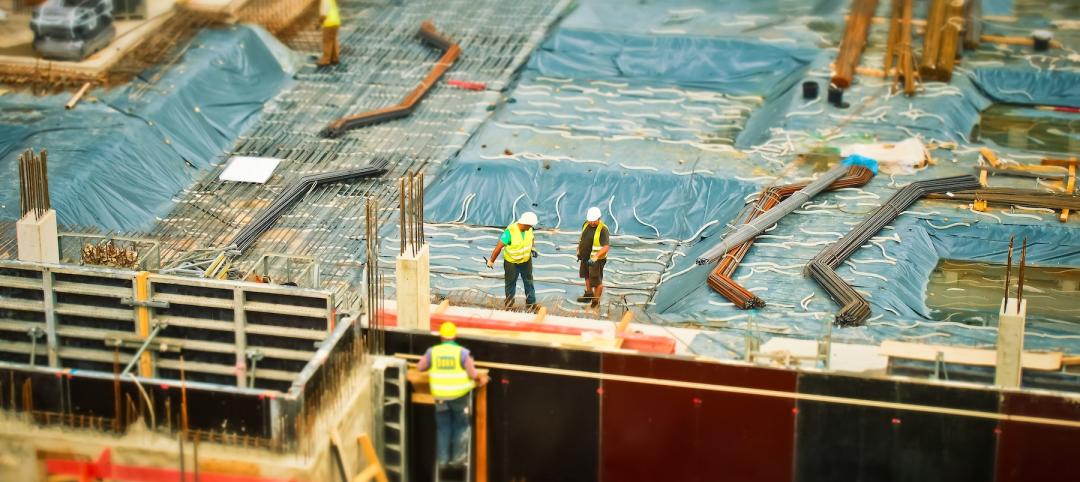For more than a decade, China has been a front-runner in the world’s skyscraper race. Now the country is taking the pole position in digging “groundscrapers” -- enormous structures built mostly underground.
Most recently, ground has been broken on construction of a high-end hotel at the foot of Shanghai’s Tianmashan in a 100-meter-deep pit.
Developed by Shanghai Shimao Property Group and to be managed by InterContinental Hotels Group, the hotel, named InterContinental Shimao Shanghai Wonderland, is expected to extend 19 stories into the bottom of the pit. It's due to open in late 2014 or early 2015.
Once completed, the deepest story of the luxury resort will be approximately 700 meters lower than the top floor of the world’s-highest-hotel-to-be, the Shanghai Tower J Hotel in Shanghai Tower, set for completion around the same time. Located about 45 kilometers southwest of Shanghai's city center, the pit in Tianmashan is 100 meters deep, 240 meters long and 160 meters wide. The lowest 20 meters are filled with stagnant rainwater, which the hotel will retain.
“The pit has served as a quarry since the 1950s,” said Yao Qi senior branding manager of Shanghai Shimao Property Group. "It has been abandoned since the year 2000."
Shimao purchased the surrounding land in 2006 in order to build Shimao Shanghai Wonderland, a large-scale theme park integrating hospitality, leisure and entertainment elements. The hotel is planned as part of the wonderland complex. Construction of the 380-room InterContinental Shimao Shanghai Wonderland commenced last month. The 19-story hotel will have three levels above ground, and 16 underground, including an underwater restaurant.
“A 60-meter glass curtain will be built to mimic a waterfall next to the resort’s main structure,” said Yao.
Designed by UK-based engineering firm Atkins, the company behind the ostentatious Burj Al Arab hotel in Dubai, the quarry hotel design bagged a Gold Medal at last year's commercial real estate MIPIM Asia Awards.
Hotel planners are considering taking advantage of the site's surrounding cliffs by hosting activities such as rock climbing and bungee jumping. Industry experts believe nightly room rates will start from RMB 2,000 (US$320), twice the price currently charged by nearby five-star hotels. Shimao is investing a total of RMB 3.5 billion (US$555 million) in the 428,200-square-meter Shimao Shanghai Wonderland, of which RMB 600 million (US$95 million) will go toward the subterranean resort.
The Shanghai property group has yet to reveal detailed plans for the rest of the wonderland complex. BD+C
Related Stories
| Aug 17, 2022
New York to deploy 30,000 window-sized electric heat pumps in city-owned apartments
New York officials recently announced the state and the city will invest $70 million to roll out 30,000 window-sized electric heat pumps in city-owned apartments.
| Aug 17, 2022
IBM’s former office buildings in Boca Raton turn into a modern tech campus
Built in 1968, the Boca Raton Innovation Campus (BRiC), at 1.7 million square feet, is the largest office campus in Florida.
| Aug 16, 2022
DOE funds 18 projects developing tech to enable buildings to store carbon
The Department of Energy announced $39 million in awards for 18 projects that are developing technologies to transform buildings into net carbon storage structures.
| Aug 16, 2022
Multifamily holds strong – for now
All leading indicators show that the multifamily sector is shrugging off rising interest rates, inflationary pressures and other economic challenges, and will continue to be a torrid market for design and construction firms for at least the rest of 2022.
| Aug 16, 2022
Cedars-Sinai Urgent Care Clinic’s high design for urgent care
The new Cedars-Sinai Los Feliz Urgent Care Clinic in Los Angeles plays against type, offering a stylized design to what are typically mundane, utilitarian buildings.
| Aug 15, 2022
IF you build it, will they come? The problem of staff respite in healthcare facilities
Architects and designers have long argued for the value of respite spaces in healthcare facilities.
| Aug 15, 2022
Boston high-rise will be largest Passive House office building in the world
Winthrop Center, a new 691-foot tall, mixed-use tower in Boston was recently honored with the Passive House Trailblazer award.
Architects | Aug 12, 2022
Goettsch Partners names James Zheng, CEO, and Paul de Santis, Co-design Director
Global architecture firm Goettsch Partners (GP) announces that James Zheng, AIA, LEED AP, has been named CEO, and Paul De Santis, Assoc. AIA, LEED AP, joins James Goettsch, FAIA, as co-design directors for the practice. As the primary partners in the firm, the three have worked closely together for more than 17 years. Goettsch will also continue to serve as chairman while Zheng now assumes the full CEO title as well as president.
| Aug 12, 2022
Monthly Construction Input Prices Decreased 2% in July, Up 17% From a Year Ago, Says ABC
Construction input prices decreased 1.8% in July compared to the previous month, according to an Associated Builders and Contractors analysis of U.S. Bureau of Labor Statistics’ Producer Price Index data released today.
Hotel Facilities | Aug 12, 2022
Denver builds the nation’s first carbon-positive hotel
Touted as the nation’s first carbon-positive hotel, Populus recently broke ground in downtown Denver.

















